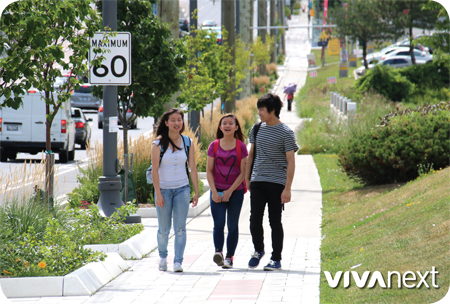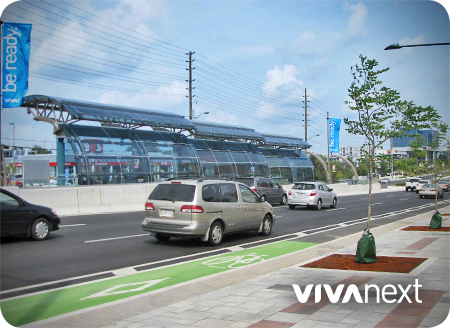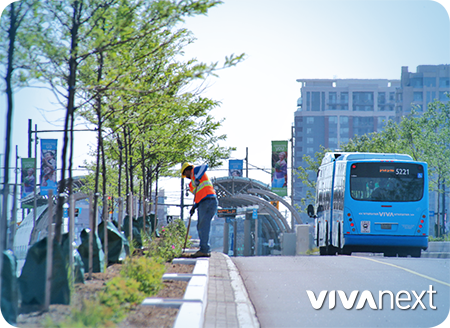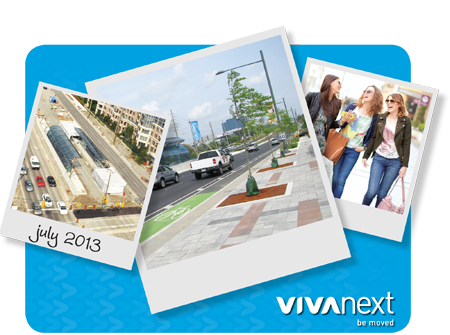
lights…
Safety has been top priority in designing the rapidway, vivastations, and the surrounding streetscape. Streetlights are one of the most important safety elements, and their design contributes significantly to the overall streetscape. While developing lighting designs, vivaNext works with York Region, the local Municipality and the Utility companies to coordinate, design and install the lights, ensuring they provide both safety and visual appeal.
There are strict national and local standards on how street lighting needs to be designed, including how much lighting is required for different conditions. For example, different criteria are used to determine the necessary lighting levels for roadways, intersections and sidewalks. These include variables such as pole height, spacing and “lux,” which is the amount of light that a fixture provides.
Once the lighting standards are established, lighting design helps achieve the desired streetscape “look.” In the case of vivaNext, the streetscape design is modern, stylish and uncluttered, helping the corridors feel like urban destinations, distinctive from other roads.
To keep with the uncluttered look on Davis Drive, special hydro poles were installed that don’t require guy wires and can have streetlights installed. The luminaires [light heads/fixtures] on the streetlights have a light sensor to automatically turn on and off, and the bulbs only need to be replaced every 4 years.
sound…
Have you ever found yourself straining to hear a quiet, garbled message from a public address system? It’s frustrating, especially when that message is important to your commute. At our vivastations, we want to be sure you won’t face this frustration, so our engineers have worked hard to design the public address [PA] system. Having audio at stations is also part of keeping Viva accessible for all users.
We conducted a sound analysis study, to determine how the shape of our vivastations would affect the way sound moves around inside the stations, and way it would reflect off the concrete wall, floor and glass. As it turned out, 12 speakers outside the passenger enclosure and another three speakers inside does the trick.
The next challenge was to work on the volume of the speakers. The problem with PA systems in noisy places is that ambient noise can overwhelm the volume of the PA system, making it impossible to hear what’s being said. Our solution is to use a speaker volume system that automatically adjusts when its sensors detect an increase or decrease in ambient noise.
There are two sensors on each new Viva platform. These allow PA announcements to be audible whether there’s a bus idling in the station and trucks are moving past, or it’s nighttime and quiet. This type of speaker volume system ensures that messages can always be heard, but won’t be intrusive.
action!
Once the rapidway opens on Davis Drive, you’ll be able to travel faster, and see and hear clearly when the next Viva vehicle is coming. What could be better than that?






